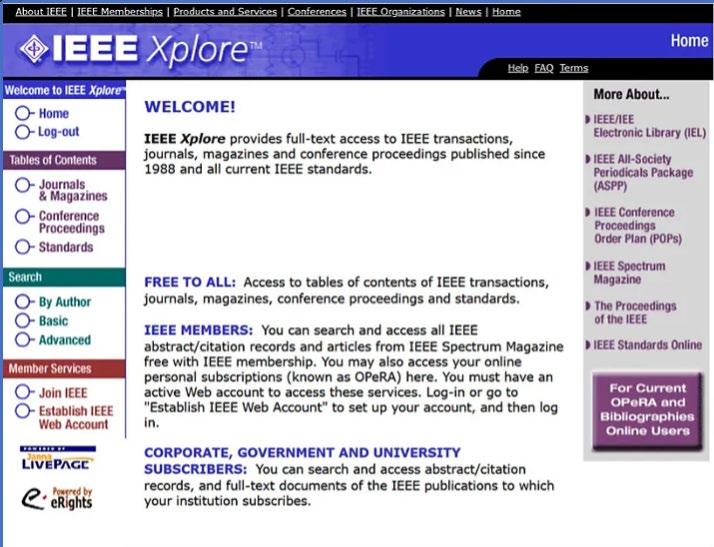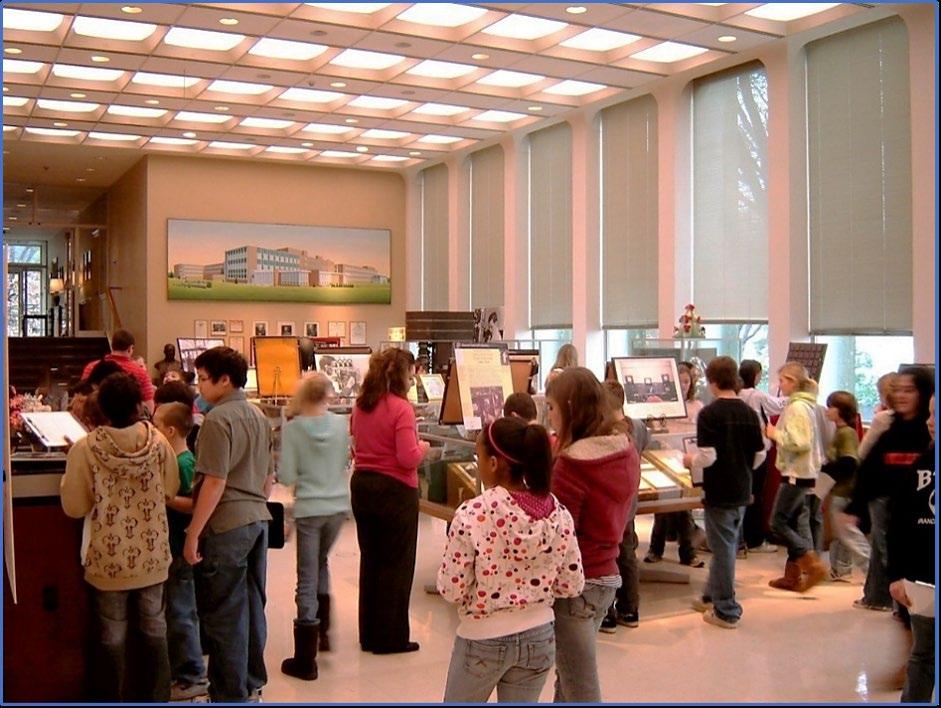
4 minute read
IEEE History Center Updates IEEE Historical Documentation and Creates A Post-1984 Living History
NEWS ITEM
IEEE History Center Updates IEEE Historical Documentation and Creates A Post-1984 Living History
The IEEE History Center has chronicled the post-1984 years of IEEE history and the impact IEEE has had on electrical engineering in the 21st century. The History of IEEE Since 1984 is available on the Engineering and Technology History Wiki at https://ethw.org/History_ of_IEEE_Since_1984. Readers can learn how IEEE transitioned to electronic publishing, its efforts to expand its membership globally, successful standard development activities, and other topics. Previous historical accounts generally stopped in 1984, the centennial of IEEE’s earliest predecessor organization, the AIEE.
THE SHIFT TO DIGITAL HISTORY
As digital technologies became more popular in the 1980s, IEEE worked to keep up with the shift from printed publications to digital versions, according to the document. Before the IEEE Xplore Digital Library, the organization experimented with an electronic index, launched in 1986, and CD-ROMs, which were introduced three years later. Using the index, members were able to order from their computer copies of articles published within a 12-month period. The CDs held about 200,000 documents including journal papers and conference proceedings.
A TRANSITIONING MEMBERSHIP
Membership in IEEE also evolved during the period. Before 1989, IEEE’s membership was mostly composed of engineers from the United States. But in the 1990s, the popularity of computers and their impact on society and the strong economy fueled global expansion. Today, the organization has more than 400,000 members in more than 160 countries. The IEEE Standards Association made great strides in developing standards worldwide, according to the report. Its most well-known standard is IEEE 802.11, developed in 1997. It’s the official international standard for wireless LANs, operating at 2 megabits per second. Popular Mechanics magazine recognized the standard with its 2003 Grand Prize for Computing.
IEEE HISTORICAL ACCOUNTS
Although the document’s main focus is IEEE after 1984, its first chapter covers the merger in 1963 of the American Institute of Electrical Engineers (AIEE) and the Institute of Radio Engineers (IRE), which together formed IEEE. The history of IEEE previously was documented in two books that covered the organization’s first 100 years. The
A plaque was placed in the Franklin Institute in Philadelphia during the IEEE-Franklin Institute Centennial Technical Convocation in October 1984 to celebrate the 100th anniversary of IEEE. (Courtesy IEEE)
Making of a Profession: A Century of Electrical Engineering in America was written by historian A. Michal McMahon. Engineers and Electrons: A Century of Electrical Progress was written by IEEE Fellow John D. Ryder and past IRE president Donald G. Fink. PDFs of the books are available on the Engineering and Technology History Wiki at https:// ethw.org/w/images/e/ee/The_Making_of_a_Profession.pdf and at https://ethw.org/w/images/c/cc/Engineers_%26_ Electrons.pdf.
A LIVING HISTORICAL DOCUMENT
The “History of IEEE Since 1984” is a being treated by IEEE as a living document. Readers with an account on the Wiki can make comments and suggest edits. IEEE History Center staff members will review the comments and, if deemed appropriate, will include them. Individual memoirs of IEEE’s history can be added in the first-hand histories section. Beginning in 2009, the 125th anniversary of IEEE, then IEEE President John R. Vig advocated that it was time for a new book covering the subsequent 25 years, and he raised funds from IEEE organizational units to make it possible. The project was funded by the following IEEE societies: Aerospace and Electronic Systems, Circuits and Systems, Communications, Dielectrics and Electrical Insulation, Industrial Electronics, Nuclear and Plasma Sciences, Power & Energy, Robotics and Automation, Signal Processing, Systems, Man, and Cybernetics,
Ultrasonics, Ferroelectrics, and Frequency Control, and Vehicular Technology, as well as the IEEE Council on Superconductivity and Sensors Council. Many Radio Club of America members are also members of IEEE, and the IEEE Communications Society, COMSOC, is a strategic partner of RCA. IEEE membership offers a wide range of benefits and opportunities for those who share a common interest in technology. If you are not already a member, consider joining IEEE and becoming part of a worldwide network of more than 400,000 students and professionals.
SOURCES
J. Goodrich, A Deep Dive Into IEEE’s Recent History, IEEE Foundation: Focus, Sep. 2021. History of IEEE Since 1984, Engineering and Technology History Wiki, https://ethw.org/History_of_IEEE_Since_1984.
Image of IEEE Xplore in 2000.The IEEE Xplore Digital Library, launched in 2000, provides members access to IEEE transactions journals, magazines, and conference proceedings published since 1872. (Courtesy IEEE)

HAS YOUR CONTACT INFORMATION CHANGED?
If you have recently changed your address, email, or phone number, please login to your membership page on our website to update your information, email amy@radioclubofamerica.org or call (612) 405-2012.

Join a global network of 29,000+ communications technology professionals!
www.comsoc.org/membership
HELP US INSURE RCA’S WORK FOR
FUTURE GENERATIONS
Please remember RCA in your wills and trusts.
Call us at 612.405.2012 or visit radioclubofamerica.org to learn more about legacy giving and bequests.
www.radioclubofamerica.org
Follow us!

Radio Club of America, 13570 Grove Drive, #302, Maple Grove, MN 55311 612.430.6995









